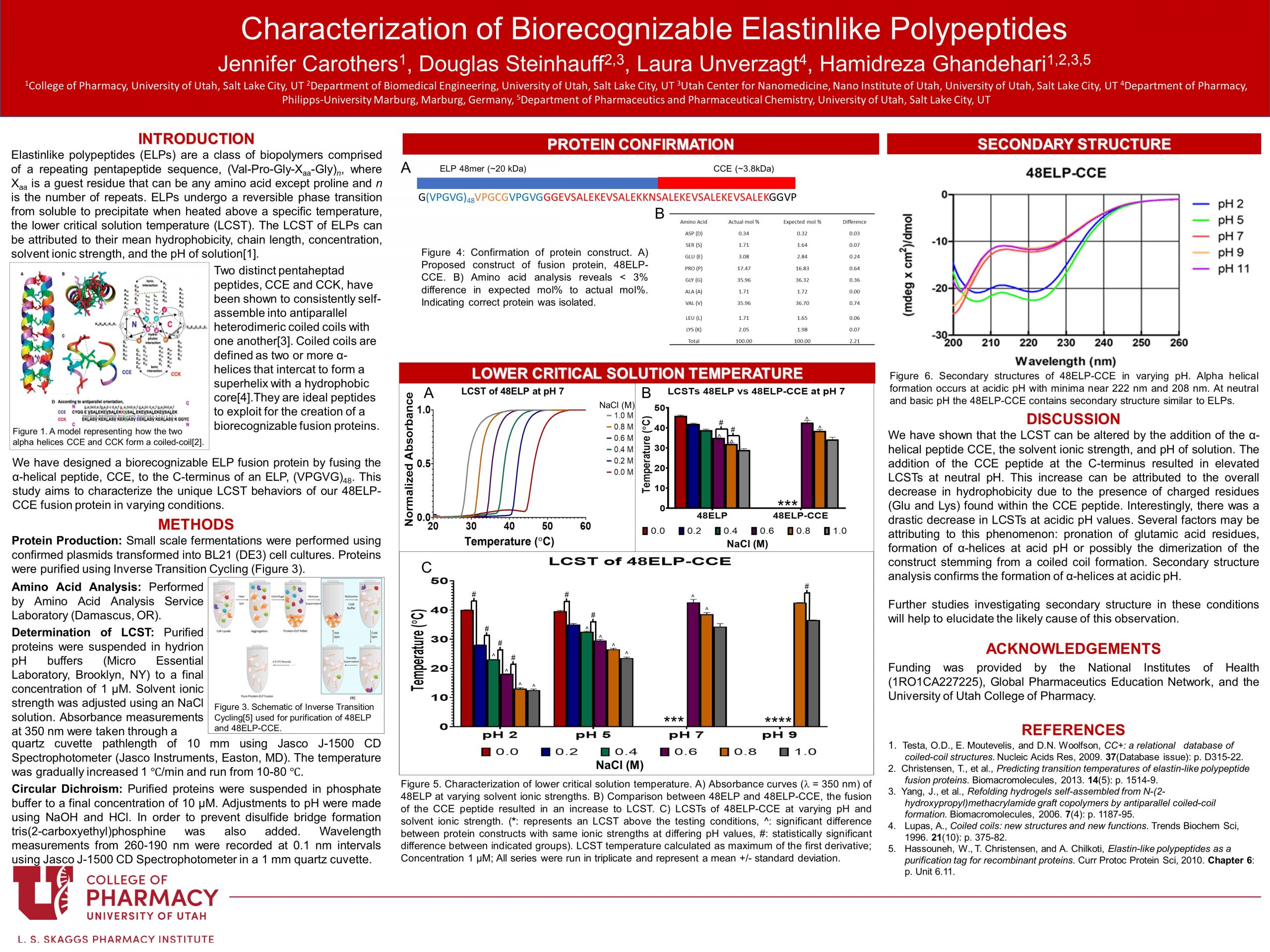Characterization of Biorecognizable Elastinlike Polypeptides

Abstract
Despite advances in targeted immunotherapies, many patients suffering from non-Hodgkin’s lymphoma continue to be resistant to standards of treatment. Novel two-step nanotherapies, drug free macromolecular therapeutics (DFMTs), are currently being investigated as an alternative. Current DFMTs utilize synthetically produced polymers fused to a pair of α-helical peptides, CCE and CCK. Synthetic polymers may lead to an unpredictable response of the overall system. We have designed a similar system utilizing a thermoresponsive biopolymer, elastinlike polypeptide (ELP), fused to the α-helical peptide, CCE. ELPs have a unique reversible physical property of phase transitioning from soluble to precipitate when heated above a specific temperature, the lower critical solution temperature (LCST). The goal of this study is to expand our understanding of how the fusion of a single CCE domain to a 48-mer ELP affects LCST properties and secondary protein structures in varying conditions. LCST and secondary structure were investigated using standard turbidimetry and circular dichroism spectroscopy processes. The fusion of CCE to 48-mer ELP resulted in an increase in LCST. Increases to LCST were also observed at lower solvent ionic strengths and more basic pH values. Secondary structure analysis showed α-helical formation in acidic pH, correlated to drastic decrease in LCST. We have shown that the LCST can be altered by the addition of the α-helical peptide CCE, solvent ionic strength, and the solvent pH. This data will serve as a foundation for rational development of an ELP based drug free macromolecular therapeutic.
Published in College of Pharmacy, Virtual Poster Session Spring 2020
Nice work, Jennifer. I hope you are pleased with the results of all your hard work! What was one thing you learned while working on this project that you think will help you in your future career?
Thank you. This was definitely one of the most difficult things I’ve had to do. I think the most valuable lesson I learned is to continue to push myself to try/do things that are out of my comfort zone. The experience, knowledge, and relationships built are invaluable.
Jennifer, this poster is outstanding! Very impressive body of work. I’m assuming the goal is to create drug-delivery molecules using this chemistry, is that correct? If so, what kind of LCST would you want, and at what concentration and pH, to be clinically useful? What’s the gold-standard for an LCST?
Hi Jennifer, congratulations on a very elegant, comprehensive set of experiments! I’m curious as to which of the elastin-like peptides you examed would be optimal for drug delivery under physiological conditions? Also, do you envision this approach being used for delivery of small molecules or macromolecules such as immunotherapeutics?
Very interesting work! Lots of effort! Congratulations for getting this work done and the beautiful poster.
Jen!
Your poster looks amazing. Well done.